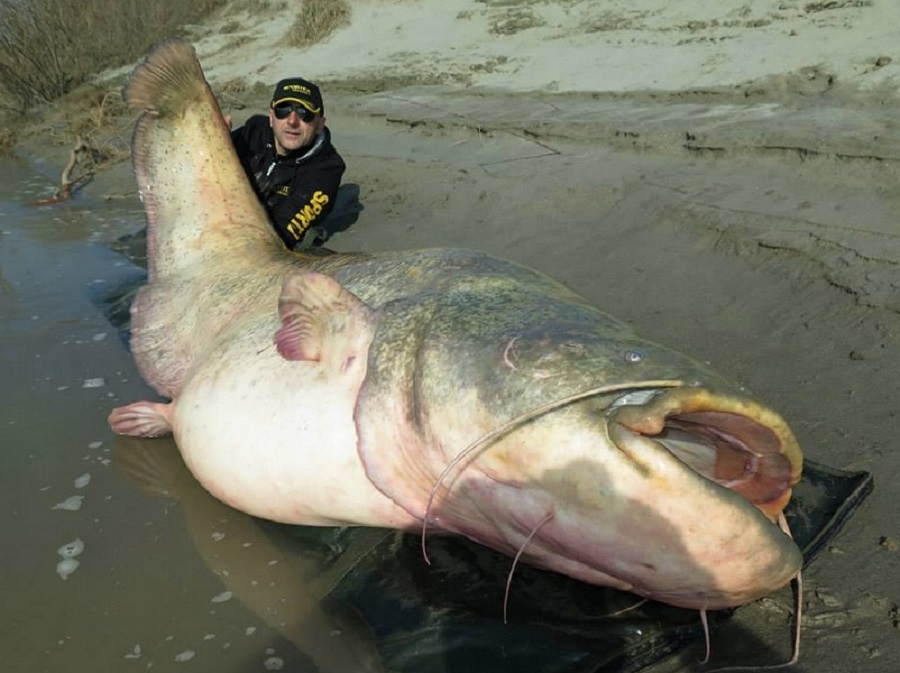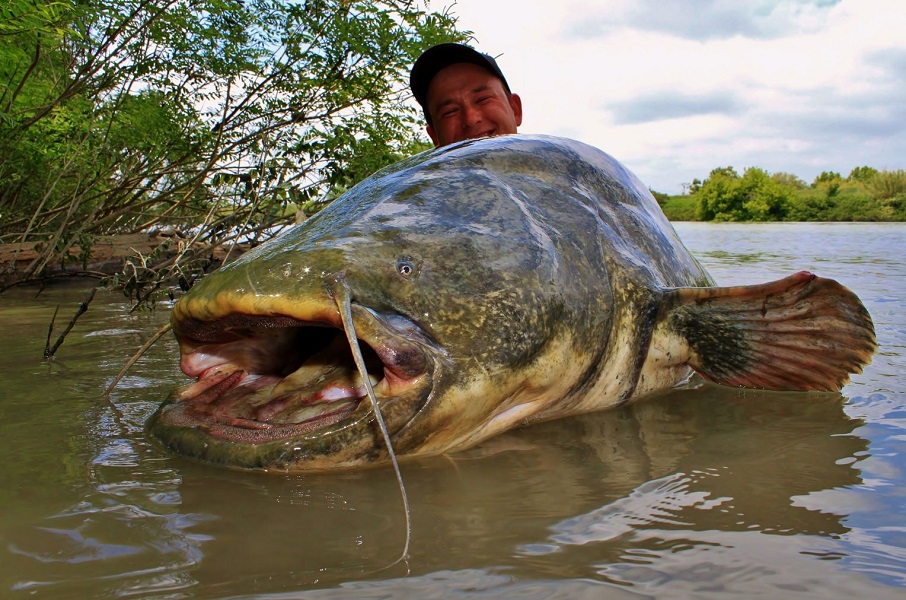On the small island below, the pigeons had no idea that a school of European catfish was approaching. Suddenly, a fish jumps out of the water, grabs a dove, then dives back with its prey in its mouth.
“I know killer whales can jump ashore to hunt seals, but I’ve never seen this behavior in other fish,” said Santoul, a fish ecologist at the University of Toulouse. Santoul spent the rest of the summer observing and documenting the phenomenon.
Almost a decade ago, little was known about catfish in Western Europe. They were imported by anglers in the 1970s. The European catfish can grow up to 3m in length and weigh up to almost 300kg. This creature is native to Eastern Europe and grows rapidly in 10 countries via the rivers of Western and Southern Europe.

In their natural habitat, catfish do not pose a threat to the natural environment as they can be hunted or raised for their meat. Catfish populations have become relatively stable over several decades, not threatening other fish species.
But in other habitats, this voracious exotic species targets important and threatened migratory fish species, such as Allis herring and Atlantic salmon. These are species whose populations in Europe are in serious decline, explains Santoul.
Santoul fears that predatory fish could wipe out many species of fish native to Western Europe, permanently altering an ecosystem already grappling with the impacts of dams, water pollution and overfishing. .
“The cumulative impact of all these factors could lead to the collapse of fish populations over the next 10 years,” Santoul warned.
Giant freshwater fish
In 1974, a German fisherman released thousands of baby catfish in the Ebro River in Spain. Other fishermen do the same in the rivers of Western Europe, helping to create the conditions for this alien creature to thrive.
Like other exotic species, the European catfish thrive in human-modified rivers, where the water has high temperatures and low oxygen levels, making it difficult for many native species to survive. The European catfish grows fast, lives up to 80 years and reproduces easily. Females can lay hundreds of thousands of eggs at a time.
But their ability to hunt is what makes them so terrifying. Like other catfish, European catfish have developed senses that are particularly sensitive to the movements of their prey.

They also have the ability to “adapt quickly to new sources of food,” says Santoul. He recorded how this fish hunted Asian mussels – another exotic species.
The European catfish specifically targets fish that swim from the oceans into rivers to spawn, such as Atlantic salmon or sea lampreys and herring Alis. They also learn ways to hunt never seen before in new habitats, such as slamming pigeons on the ground.
On the Garonne, in France, catfish sometimes lie in wait in tunnels connected to the hydroelectric power station to catch migrating salmon. Also in this river, European catfish learn to hunt herring Alis at night.
“All of these studies lead to the same conclusion, that the European catfish has become a major threat to migratory fish,” Santoul said.
But there is one thing the European catfish cannot threaten, and that is people. “This fish is not harmful to humans. You can swim right next to them and they are harmless, ”says Santoul.
Danger signs
The Nile perch is another example of how freshwater fish wreak havoc in the natural environment. This fish has been introduced to Lake Victoria and other lakes in East Africa for fishing purposes, causing the populations of 200 native fish species to decline dramatically in just 20 years.
Normally, large populations of freshwater fish are on a declining trend. But European catfish are an exception because they adapt quickly and reproduce vigorously, says researcher Zeb Hogan.
Hogan is a National Geographic explorer and fish biologist at the University of Nevada, Reno, USA. “Entire freshwater ecosystems are also critically endangered, with the introduction of alien species cited as the main cause,” Hogan said.

The changing ecology of climate change and rapid changes in precipitation, scientists warn, could create even more favorable conditions for the development of European catfish.
“The impact of climate change on each species is different, with some alien species more likely to thrive than native species,” said Rob Britton, an alien species expert at Bournemouth University.
It is increasingly evident that the European catfish, which needs water temperatures above 20 degrees Celsius to reproduce, is starting to become abundant in rivers in Belgium and the Netherlands, Santoul said. .
In France, catfish species also breed much more, as fresh water in France has a longer warming period of the year.
According to conservationists, there is currently no effective method for catching European catfish. The fishing industry is thriving in Spain and Italy thanks to the catfish, but the government and fish farmers in these two countries have not budged to eradicate the catfish.
Another problem is that West Europeans are not used to processing catfish for food. Santoul stressed that European countries must work more closely to preserve freshwater ecosystems, as well as pay more attention to threats to migrating fish.
“What worries me is that the number of migratory fish species is decreasing because of the catfish,” Santoul said. “If we don’t have a conservation plan in place soon, it will be too late to save migratory fish populations.”


